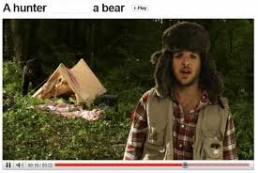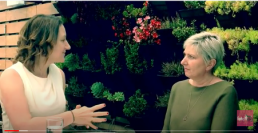What can your brand learn from the John Lewis Christmas ad?
Every year I wait impatiently for John Lewis to release their Christmas advert to see which of my heart strings they are going to pull and how they will make me feel.
This year’s ad featuring ‘Moz the Monster’ is about bringing to life the power of children’s imagination and the joys of great friendship.
John Lewis Christmas ads have been part of a successful long term brand building campaign using Christmas tradition to connect their brand around family values, sharing and wonderment with their audience – and the strategy is working.
The Christmas campaigns have been running since 2011 and have been attributed to an average of 16% increase in sales over the festive season between 2012-2015. They are also the most shared ads on the internet with the 2016 John Lewis Christmas ad being viewed over 25 million times.
Successful brands know how to build connections with their customers and that is to do it with emotion. Emotional connections rise above superficial pricing and convenience meaning customers stay loyal for the long haul and are less likely to defect to competitors.
Simplistically to build emotional connections with your customers consider the following:
- Make your customer a priority of your business
- Listen to your customer and demonstrate how you understand their everyday needs
- Develop your company personality by letting its human out – people connect with the people
- Be consistent in the delivery of your company personality in everything you do and say
Consumers define themselves by the brands they use and the more connected they are to your brand the more likely they are to become advocates for you and amplify your message to their family and friends.
Like John Lewis, building your brand is a long term strategy, and incorporating emotion is invaluable in differentiating your brand from competitors and help create a deep seated relationship between your business and your customer.
Now getting back to this year’s John Lewis Christmas ad. Did the ad make me feel warm and fuzzy and connect me emotionally with the essence of Christmas as they have in previous year's? The short answer is no. But I’m swimming against the tide, Brandwatch is reporting consumer sentiment is running at 86% positive and 14% negative so it looks like John Lewis have another success story on their hands.
What do you think of the 2017 John Lewis Christmas ad compared with previous year's?
Tippex - having fun while building their brand
What better way to build your brand and product education than developing interactive fun clip on YouTube. This is exactly what Tippex did when it developed “A hunter shoots a bear”.
The concept is simple, the audience which represents the hunter can choose to shoot the bear, or white out shoot and develop their own scenario which may include having dinner with the bear, marrying the bear or gardening with the bear just to mention a few.
With almost 17 million views, ‘A hunter shoots a bear’ has taken the Tippex brand into homes and offices across the globe with a simple brand promise of being able to white things out and start again.
With 65% of consumers considering themselves overwhelmed by too many advertising messages and 60% believing that advertising is not relevant to them (Porter and Golan 2006), marketers face ongoing challenge to understand how to reach and communicate with their customer and potential customer in new and innovative ways.
This clip has been posted thousands of times on the internet, it appears in blogs, it is used as an example of great viral marketing in numerous marketing papers and journals. While it has been described as in all manner using textbook terminology such as an; excellent example of viral marketing, great cut through, getting the message across etc etc, too many have missed the most important part of the campaign is that it is fun.
David Lewis posted on his blog that he and his daughter spent time together using “A Hunter Shoots A Bear” during their summer vacation, posting the options of how you can interact with the bear. I tested the clips appeal with my 5 year old nephew some time ago and the response was amazing. We must have spent over half an hour having fun interacting with the clip.
Tippex’s “A Hunter Shoots a Bear” delivers an interactive fun clip that has broad appeal, entices people to share it to create viral opportunities while delivering brand awareness and product education.
Interview Series: Member Engagement
Alison was interviewed by Georgie Stayches, Fetching Events & Communications as part of their Insights Interview Series.
We discussed and explored what makes a membership program successful and why it is important for members to be at the heart of the organisation, and how to grow and maintain a membership base.
We hope you enjoy our interview as much as we enjoyed talking about a topic that is that is close to our heart.
Did you connect with Boxer this Christmas?
Every year I wait impatiently for John Lewis to release their Christmas advert to see which of my heart strings they are going to pull and how they will make me feel.
This year’s ad featuring ‘Moz the Monster’ is about bringing to life the power of children’s imagination and the joys of great friendship.
John Lewis Christmas ads have been part of a successful long term brand building campaign using Christmas tradition to connect their brand around family values, sharing and wonderment with their audience – and the strategy is working.
The Christmas campaign has been running since 2011 and has been attributed to an average of 16% increase in sales over the festive season between 2012-2015. They are also the most shared ads on the internet with the 2016 John Lewis Christmas ad being viewed over 25 million times.
Successful brands know how to build connections with their customers and that is to do it with emotion. Emotional connections rise above superficial pricing and convenience meaning customers stay loyal for the long haul and are less likely to defect to competitors.
Simplistically to build emotional connections with your customers consider the following:
- Make your customer a priority of your business
- Listen to your customer and demonstrate how you understand their everyday needs
- Develop your company personality by letting it’s human out – people connect with the people
- Be consistent in the delivery of your company personality in everything you do and say
Consumers define themselves by the brands they use and the more connected they are to your brand the more likely they are to become advocates for you and amplify your message to their family and friends.
Like John Lewis, building your brand is a long term strategy, and incorporating emotion is invaluable in differentiating your brand with competitors and help create a deep seated relationship between your business and your customer.
Now getting back to this year’s John Lewis Christmas ad. Did the ad make me feel warm and fuzzy and connect me emotionally with the essence of Christmas as they have in previous year's? The short answer is no, and I’m really disappointed. But I’m swimming against the tide, Brandwatch is reporting consumer sentiment is running at 86% positive and 14% negative.
What do you think of the 2017 John Lewis Christmas ad compared with previous year's?
Customerise your website
Some web designers want to create a site that has a gadget or a gizmo or something “cutting edge” that proves that the brand is “innovative” and “progressive”. And what company isn’t tempted by this, showing that you are “leading the way” feels great, and delivers lots of back slapping and high fives around the office.
BUT, don’t forget it’s the customer who is the centre of your web development world. cyberindian.com, web designers were kind enough to post 8 tips for great websites on the web, but not one mentioned the customer.
cyberindian.com are not the minority in this space which is disappointing for the customer and a warning to all businesses ensure that your web designer supports a customer centric development focus.
Successful web designers and their sites are customer centric. Their goal is not to deliver the most visitors, achieve the highest number of page views or keep visitors online for the longest time, it is simply to provide the visitor with a great web experience that delivers the information they want and need in an efficient manner.
And forget the “build it and they will come” dream. Build it, market it, and they will come once if your lucky. Get it right and develop it for them and they will come again and again and again –AND they will tell their friends.
It is critical that when building a website that we have a deep understand of our target audiences. The key questions that need to ask ourselves are:
- What information does our target audience (our customer) want
- How do we get this information to them in the most efficient manner
- How experienced are our customers using the internet
- Do our visitors easily navigate the site?
- Can we undertake usability testing
So let’s get customer centric not only on our websites but in everything and we will see and feel the difference.
Which path will you take - SEO or PPC
So was it the rabbit or the turtle who won the race?
There are two key strategies for driving traffic to small business websites, the turtle being Search Engine Optimisation and rabbit, pay per click advertising.
Search Engine Optimization when done correctly, completely and with integrity – works – but it takes time and commitment. The results will take longer to achieve, however the long term benefits cannot be underestimated.
Figures indicate that only 6% of search engine users click on sponsored listings. These figures reinforce the importance of ensuring your website is optimised for search engines and achieving the highest possible search engine rankings across multiple key word searches.
There are a number of great sites that you can visit to get tips and ideas on how to get started, however working closely with your web designers in the first instance is a great way to start. It’s always good to start with a strong foundation and build from there.
Pay per click on the other hand will deliver immediate responses when well targeted and well written and if managed well can deliver incremental traffic and business in a cost effective manner. Pay per click provides you with the opportunity to reach segments that you may not be achieving the rankings that you aspire to as a result of competition. In addition it is also an important tool in further developing your brand awareness and allows you to develop the message that you want to get across to the potential visitor.
So which one is it? Search Engine Optimisation or Pay Per Click – The rabbit or the turtle?
Both have a place and both are great tools to drive targeted traffic to your website. But always keep your focus on your customer, and the integrity in your brand and you will succeed.




